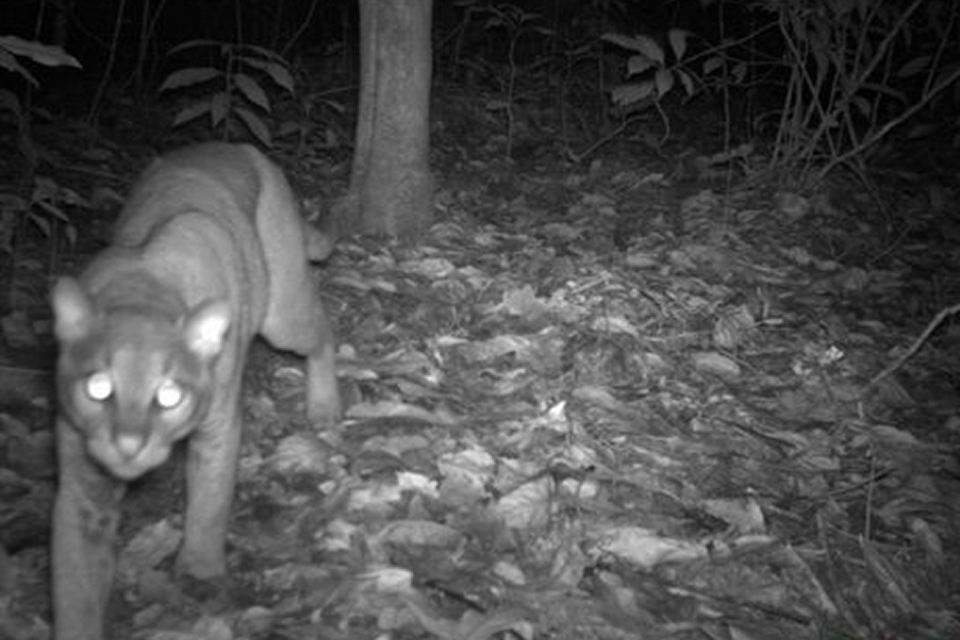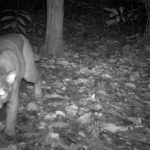Hunting poses a major threat to many large mammals. It can also have a lasting impact. Just last month, a black-back mountain gorilla (in Bwindi) was brutally speared to death by suspected poachers for a reason that it had attacked their hunting dog. With only a few hundred animals it wouldn’t take much hunting to drive these gorillas to extinction — and they would be gone forever. Even now in one of Africa’s best protected forests we see the shadow of hunting. Some impacts though may be less obvious.
The solitary leopard is extremely difficult to spot in the wild. It is renowned for its sharp vision and keen sense of hearing, and for its ability to avoid detection. Bwindi Impenetrable National Park, a UNESCO World Heritage Site is one of the most prominent forests in Africa in terms of mammal diversity, supporting at least 120 known species. The park supports Elephants, Bush Pigs, Giant Forest Hog, Black-fronted Duiker, Yellow-backed Duiker, Clawless Otter, Side-stripped Jackal, Civet and numerous other species although it’s most prominent for the rare Mountain gorilla.
Although the park covers 321 km² and a broad altitudinal range (1160 – 2600 m) several notable large mammal species are absent (buffalo and leopard) or only have a restricted range (elephant, giant forest hog and bushbuck). Recent photographs from our camera traps set in different zones of have only revealed the Golden cat to be the largest cat in the park. So what about leopards? Why don’t we have any?
Northeast of Bwindi, just about 30 km away in Maramagambo forest (ranging between 900 – 1050 m ASL), the five species mentioned in the previous paragprahp are al still present — leopards included. Bwindi’s northern most forest part which is closest (30 km) to Maramagambo is at 1050 m ASL. These two forests therefore were probably once connected and it seems reasonable to suppose that leopards like the other four species in Maramagambo once occupied Bwindi.
A study by Pitman (1935) reported that leopards had been seen in Bwindi in 1933/1934. Another ecological survey of Bwindi (Thomas Butyski 1984) indicated that they had last been seen by local communities in the early 1950s ranging in the Northern sector of the park and that they had disappeared from the Southern sector in about 1972. This survey also indicated very low densities of leopard prey species such as duikers, bushbucks, wild pigs and giant forest hogs. This was largely due to heavy poaching of these species. These low prey densities may have indirectly exterminated the leopard though poaching could also have had a direct negative effect on leopards. (We acknowledge that some authorities, including Jonathon Kingdon, do not accept these past leopard records as well founded and do not believe there is any good evidence that these cats persisted/existed in Bwindi in recent decades or even centuries).
At the time of the 1972 survey poaching was still common and widespread. About 45% of the people who entered the forest were conducting illegal acts there (mainly removal of wood, bamboo, livestock forage, minerals, honey and meat).
People should know that a leopard’s skin is more valuable on a living animal than it is on a wall. In their hunt for the beautiful skins, profit and food, poachers threaten more than the animals they are hunting for. They also threaten to destabilize entire ecosystems by removing a top predator which would have dramatic consequences for a host of species lower on the food chain. It is certainly because there are no leopards to keep populations of baboons in check, for instance, that we now have rampant crop raiding around some areas near Bwindi.


